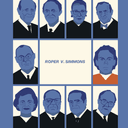
For decades, studies have shown persistent racial disparities in the administration of capital punishment. Saying “death sentences are unevenly and unfairly applied based on race,” California Governor Gavin Newsom on March 13, 2019 imposed a moratorium on executions in the state with the nation’s largest death row. Responding to the governor’s moratorium In an op-ed for the Los Angeles Times, Stanford psychology professor Jennifer Eberhardt—one of the leading researchers on social science and race — says race discrimination in the death penalty “is real” and that the research supports the governor’s claim. “In a state that is only 6% black, more than one-third of defendants sentenced to death in California are black,” Eberhardt said. California, like other death-penalty states, also shows evidence of bias in favor of white victims. Defendants who kill white victims are much more likely to be sentenced to death than those who kill black victims.
“But the truth is more complicated, and more insidious, than a simple black/white divide,” Eberhardt explains. Her groundbreaking 2006 study of two decades of death sentences in Philadelphia found bias operating at the subconscious level based upon an African American’s physical appearance. “When black men are judged by juries in capital cases, their sentences can hinge on just how black they are perceived to be,” Eberhardt writes. “Those with darker skin, wider noses and thicker lips are subject to far harsher sentencing than lighter-skinned blacks with less prominent, so-called black features.” In the study period between 1979 and 1999, black defendants with stereotypically African features were much more likely to be sentenced to death than black defendants with less stereotypical features (see image), but only if the victim was white. In the study of Philadelphia capital convictions, “Of the men rated low in stereotypical features, only 24% had been sentenced to death. But more than 57% of the “highly stereotypical” black defendants were sentenced to die for their crimes.” “Those strong distinctions signal that our perspectives, our criminal justice process and our institutions are influenced by primitive racial narratives that link people of African descent to darkness and evil,” she says.
Eberhardt’s op-ed describes how racial bias has become ingrained in the criminal justice system. “Research has shown that highlighting racial differences in the justice system actually leads members of the broader public to be more supportive of punitive policies, including the death penalty. When the implicit narrative of black ‘wickedness’ is not challenged, it can seem to perfectly explain the disparities in outcomes,” she says. In addition, unlike any other equal protection challenge under the U.S. Constitution, the U.S. Supreme Court’s 1987 decision in McCleskey v. Kemp barred defendants from using statistical evidence as circumstantial evidence of racial bias, instead requiring proof of “particularized discrimination” — that is, direct evidence of intentional discrimination in their case. “The ruling came under heavy criticism from legal scholars and civil rights activists, concerned that it made institutional racial bias constitutional, and simply part of the status quo,” Eberhardt writes, and was the one ruling Justice Lewis Powell, the author of the 5 – 4 decision, said he regretted in his time on the Court.
(Jennifer Eberhardt, Bias in the justice system is real, and the death penalty reveals it, Los Angeles Times, March 21, 2019; Gavin Newsom, California governor: Why I put a freeze on the death penalty, CNN, March 21, 2019.) See Race and Studies.


